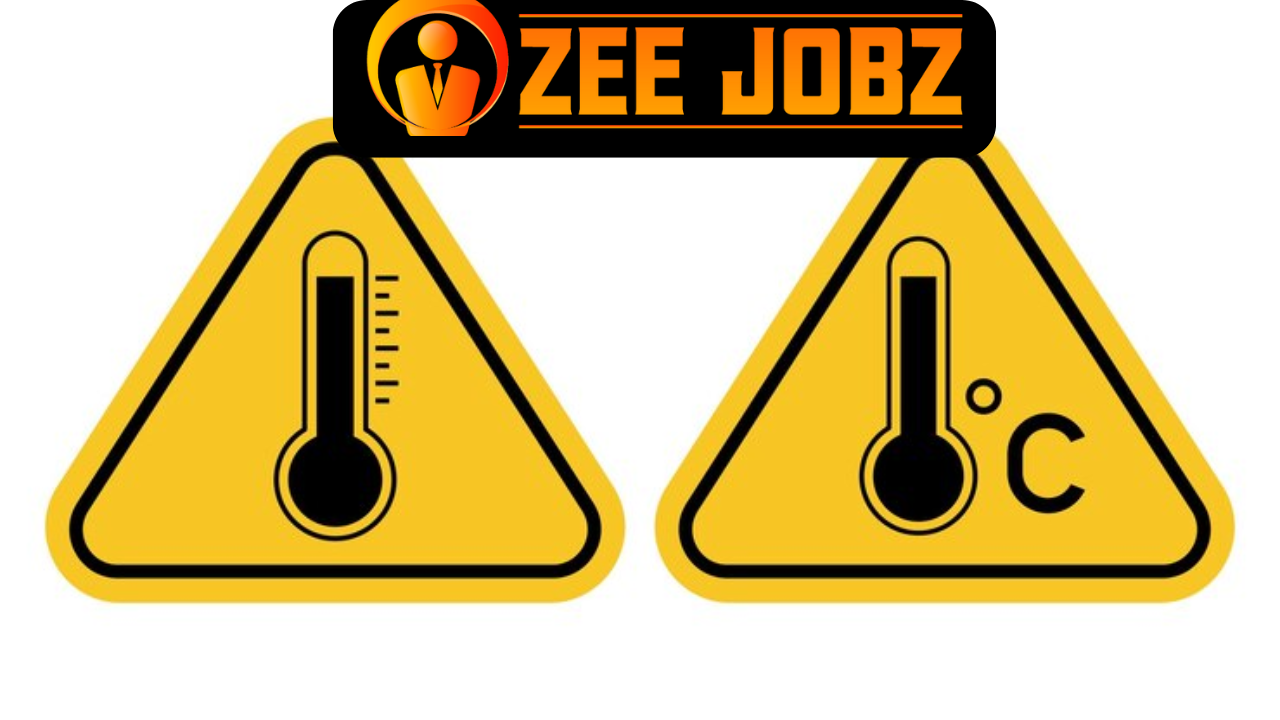Introduction to Wind Chill Warning
Wind Chill Warning can present significant challenges and dangers, especially the intense cold. One of the crucial weather reports issued at an unspecified time in the future of the ice months is a caution for the wind to ease. These warnings are necessary to inform the public about dangerously wind-exacerbated bloodless conditions that could significantly increase the risk of cold-related illness and death. This article dives into the wind relaxation era, standards for issuing low back warnings, health hazards, safety precautions, and how to build and respond to these warnings.
The Science of Wind Chill Warning
Wind Chill Warning refers to the perceived drop in air temperature felt through the pores and skin due to the wind. It’s somewhat bloodless how it feels outside simultaneously as the wind rather than the actual air temperature. The wind removes heat from the frame, causing the pore and skin temperature to drop and, ultimately, the internal temperature of the frame.

The Wind Chill Warning Index (WCI) is calculated using a mathematical engine that considers air temperature and wind speed. This technique turned into elaborate experiments that studied how wind affects heat loss from the human body. Meteorologists use the Wind Relaxation Index to offer a more accurate evaluation of the probability with the help of cold weather, thus helping people understand the severity of freezing conditions and put them together.
Criteria for issuing Wind Chill Warning
Weather organizations, including the National Weather Service (NWS) in the United States, issue Wind Chill Warning when Wind Chill Warning readings reach dangerously low degrees. Different areas may also have different thresholds for issuing these warnings, but they usually fall within a comparable range. For example, the NWS routinely issues wind-settlement warnings in the United States when the wind-back temperature is expected to be -25 °F (-32 °C) or lower.
Additionally, regional variations play a role in identifying wind gust warning standards. Familiar with much lower heat temperatures, Northern areas may have reduced thresholds compared to southern regions. In addition, factors that include publicity periods and trending climate styles are considered when issuing wind release warnings, allowing meteorologists to evaluate the general danger and functional effect on the population.
Health risks associated with Wind Chill Warning
Wind Chill Warning can be a severe health risk, especially when temperatures drop significantly. Some significant health hazards associated with the common cold include hypothermia, frostbite, and the common cold.
Hypothermia occurs when the body loses heat faster than it can produce, causing the core temperature to drop below 95°F (35°C). Symptoms of hypothermia include tremors, confusion, slurred speech, and lack of coordination. Severe hypothermia can be life-threatening and requires immediate clinical attention.
Frostbite sizing the ps, skin, and underlying tissues. It usually affects the extremities, including the fingers, feet, ears, and nose. Initial signs and symptoms of frostbite include cold pores and skin and a prickling sensation, observed with numbness and stiff, mild pores and skin. Severe frostbite can cause permanent injury or amputation.

Frostnip is a milder form of frostbite that does not deal permanent damage. It causes superficial freezing of the skin, especially redness and numbness. Although frostbite is much less intense, it can improve frostbite if it is not treated immediately.
Frostbite: Repeated exposure to cold and moisture can cause a painful, inflamed pore and skin lesion. It usually affects the extremities and can cause itching, redness, swelling, and blisters. Although it is no longer a lifestyle threat, frostbite can be uncomfortable and requires proper care.
Cold stress occurs when the body cannot consistently maintain its average temperature due to bloodless weather. If not well controlled, this can lead to hypothermia and frostbite. Workers and outdoor lovers are mainly at risk at some point in excessive bloodless weather.
Wind Chill Warning recognition
National weather organizations, such as the National Weather Service in the United States, Environment Canada, and the Met Office in the United Kingdom, generally issue lower-back Wind Chill Warnings. These warnings are disseminated through channels, sites, mobile apps, and news.
Wind Chill Warning channel warnings are communicated through multiple systems to ensure widespread. These systems include weather websites and apps that provide updated statistics on current and forecast wind release conditions, data broadcasts on TV and radio, social media alerts and updates from weather corporations and local authorities, and public warning systems that deliver alerts on Mobile phone devices.
Preparation for Wind Chill Warning events
Proper preparation is essential to staying safe during Wind Chill Warning opportunities. This includes dressing as a heavy, bloodless shoulder, preparing your home, and ensuring your car is ready for icy conditions.
Dressing for extreme cold: Proper clothing is essential to defend against the effects of the wind and lean back. Essential suggestions include layering clothing that attracts warmth, covering limbs with hats, gloves, scarves and insulated boots, and avoiding cotton, which needs synthetic or wool materials that keep warm even when wet.
Home Preparations: Preparing your home for excessive blood loss is vital for protection and comfort. The steps consist of insulating home windows and doors with weatherstripping and insulation to prevent heat loss, maintaining heating systems to ensure they are in working order, and stocking up on emergency supplies of food, water, blankets, and essential medicines.
Vehicle Preparation: Vehicles must be prepared for cold weather to ensure safety throughout the tour. Tips include winterizing your vehicle by checking the antifreeze level, battery condition, tyre tread and windshield wipers, keeping an ice emergency kit for your car that consists of blankets, food, water, a flashlight and a primary resource pack, and notifying someone about your tour plans and expected arrival time while maintaining unnecessary sightseeing during wind warnings.
Stay safe during windy events.
On occasions when the wind clears, it is essential to take precautions to protect yourself and others from the risks of excessive cold.
Limit outdoor exposure: Minimize time spent outdoors during periods of extreme bloodlessness. If you must jump out, take breaks to warm up and avoid overexertion.
Recognizing the early signs of cold stress: Be aware of the early signs and symptoms of hypothermia and frostbite, including shivering, numbness, and disorientation. If signs and symptoms occur, seek warmth and scientific concern.
Emergency measures: Know what to do in an emergency. In case of hypothermia, move the individual to a thermal area, remove wet clothing, provide warm drinks, and avoid direct heat. In case of frostbite, warm the affected areas gradually with warm (now not hot) water and protect yourself from rubbing or massaging the frozen pores and skin.
Helping Vulnerable Populations: Pay special attention to vulnerable populations, including the elderly, children, and people with chronic illnesses. Ensure they have enough warmth and clothing, and check on them regularly.
The role of the community and government in Wind Chill Warning
Municipal and official organizations are vital in raising awareness of wind loss and intense bloodlessness. Public awareness campaigns can educate the public on framing and responding to low-back Wind Chill Warning.
Emergency shelters and heating devices provide a haven for people without good heating during intemperate bloodless activities. Local governments and community agencies often coordinate these services and ensure those in need have access to warmth and safety.

Long-term infrastructure designs and upgrades can mitigate the effect of a severe cold snap. These include investment in energy-inexperienced housing, public heating supply, and emergency preparedness packages. By strengthening community and infrastructure resilience, the impact of fate’s non-bloody weather activities can be minimized.
Case studies of Wind Chill Warning events
2019 Chicago Cold Wave: In January 2019, experts in Chicago reported low temperatures with Wind Chill Warnings reaching -55 °F (-48 °C). The metropolis has issued a wind warning, and emergency offers have been activated to offer shelter and assistance to citizens. The event highlighted the importance of preparedness and the effectiveness of coordinated emergency response efforts.
Texas Winter Storm 2021
In February 2021, a powerful typhoon hit Texas, causing massive power outages and dangerously cold temperatures. Wind gust warnings were issued, and the nation faced considerable challenges in providing heating and assets to affected citizens. The occasion underscored the need for infrastructure resilience and a robust conversation through challenging climate action.
These case studies highlight the importance of preparedness, intense conversation, and a community manual during excessively cold occasions. They emphasize the need for solid emergency response plans and infrastructure resilience to mitigate the effects of excessive Wind Chill Warning.
Future trends and considerations of Wind Chill Warning
Climate change and cold weather: While global temperatures rise due to weather changes, extreme cold can still occur. Understanding how climate change affects weather patterns is essential for future preparedness. While the frequency and intensity of extreme bloodless occasions may additionally vary, being organized for unexpected and extreme cold weather is vital.
Advances in Weather Forecasting: Technological improvements in weather forecasting increase the accuracy and timeliness of wind warnings. Improved series of modes and statistics provide higher predictions and help mitigate risks. These improvements allow meteorologists to issue more accurate warnings and help the public take appropriate precautions.
Personal and Community Resilience: Building resilience in every man, woman, and community is critical to adapting to extreme weather sports. Education, preparedness, and the provision of assistance play critical roles in building resilience. By fostering awareness and preparedness, organizations can better withstand the effects of excessive cold.
Conclusion
Wind release advisories are necessary to protect public health against unspecified future extreme cold weather. Understanding these warnings, recognizing the risks and taking appropriate precautions can prevent anaemia-related diseases and save lives. By preparing for Wind Chill Warning, staying informed and supporting the inclined population, people and groups can mitigate the effects of extreme anemia. Emphasis on education, mindfulness and resilience will ensure a more stable and prepared society in the face of future bloodless climate conditions.
Read More: Stars-923: The Fascination and Mysteries of a Cosmic Marvel



